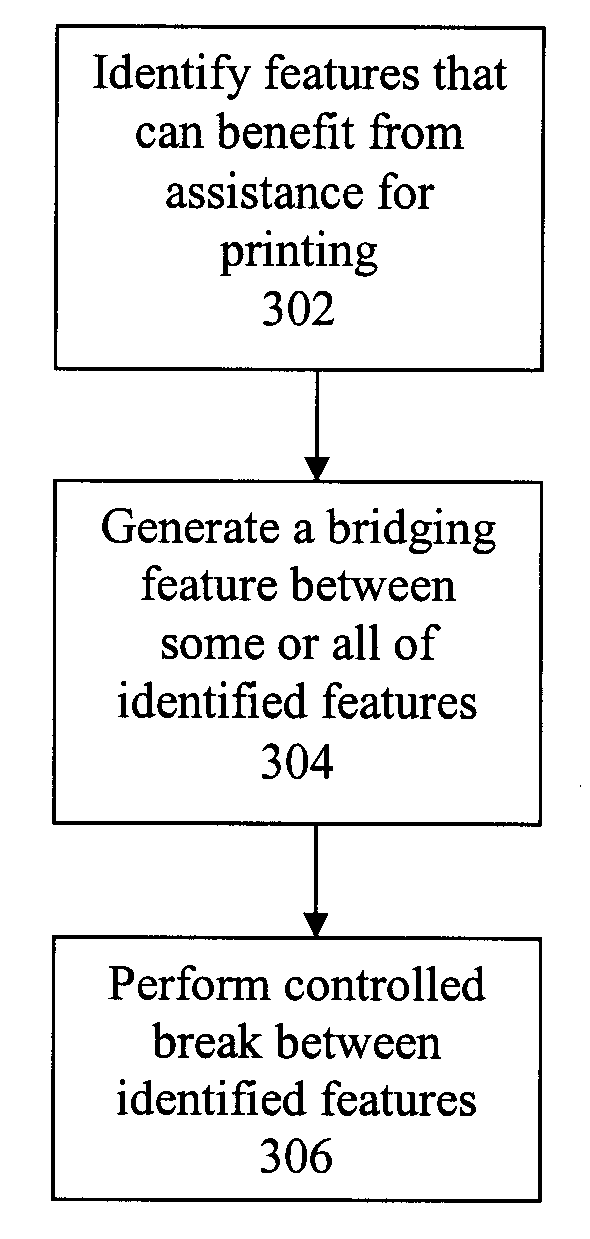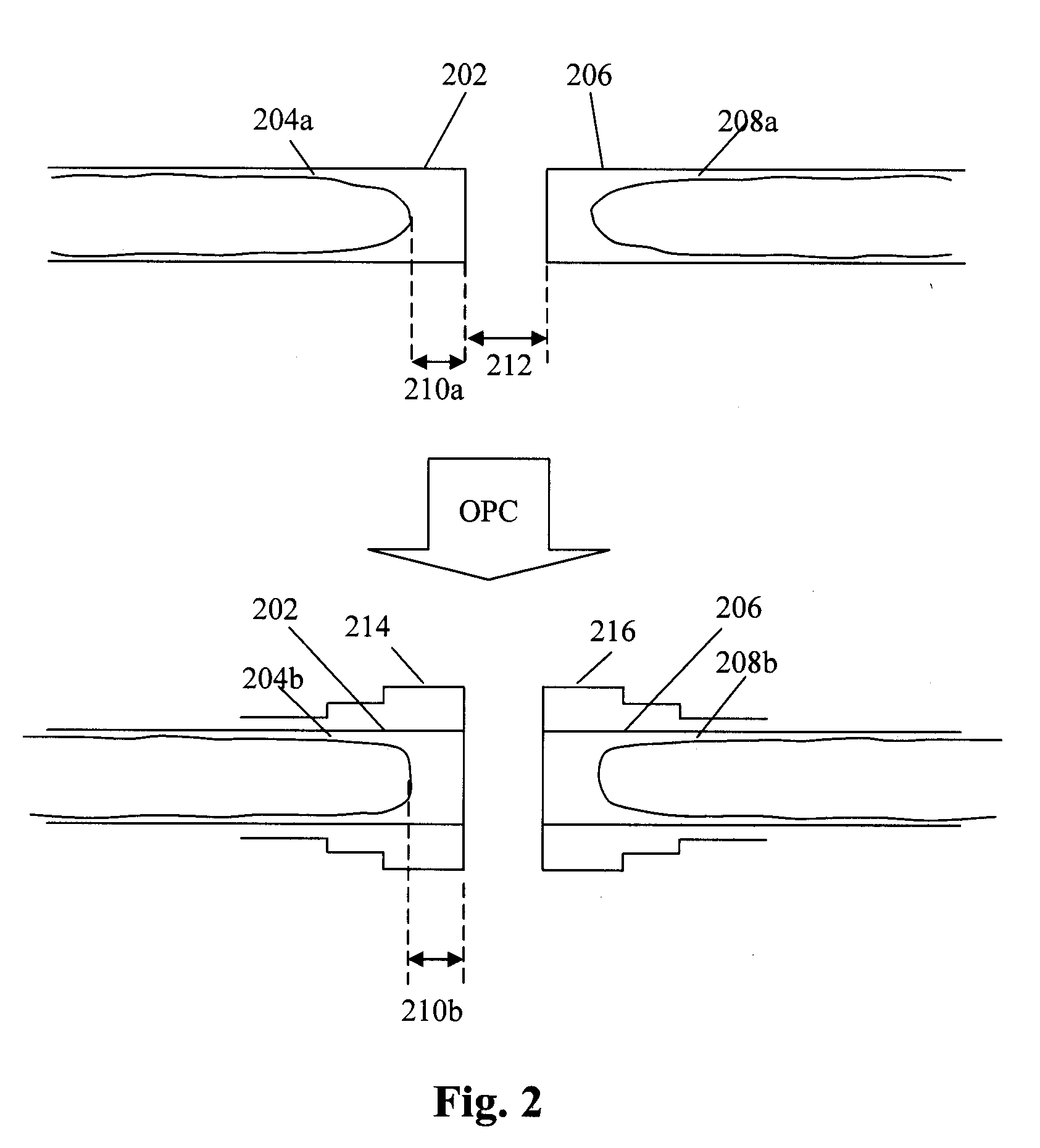Method and System for Implementing Controlled Breaks Between Features Using Sub-Resolution Assist Features
a technology of assist features and breaks, applied in the field of sub-resolution assist features for controlling breaks between features, can solve the problems of extreme precision for sub wavelength or low-kl, the location and dimensions of the resultant printed shape will shift a considerable distance from the original layout, and the resolution limit of conventional optical lithography technology is increasingly being challenged. , to achieve the effect of high level
- Summary
- Abstract
- Description
- Claims
- Application Information
AI Technical Summary
Benefits of technology
Problems solved by technology
Method used
Image
Examples
Embodiment Construction
[0029]Some embodiments of the present invention provide a method, system, and computer program product for implementing controlled breaks using sub-resolution assist features (SRAF).
[0030]According to some embodiments, an SRAF is placed in the opening between two disconnected features. In essence, the SRAF “bridges” across two features such that the combination of the two features and the mask essentially forms a single interconnected feature on the mask. The SRAF is not printable, so that the final printed shapes will not be shorted across the intended opening between two features. However, the placement and dimension of the SRAF will cause a “controlled break” to occur for that intended opening between the two features such that the biasing resulting from the SRAF bridge will cause the two features to lithographically print in a manner that more closely matches the ideal shape, dimension, or location of the intended layout.
[0031]Using simulation of the process capability, one can ...
PUM
 Login to View More
Login to View More Abstract
Description
Claims
Application Information
 Login to View More
Login to View More - R&D
- Intellectual Property
- Life Sciences
- Materials
- Tech Scout
- Unparalleled Data Quality
- Higher Quality Content
- 60% Fewer Hallucinations
Browse by: Latest US Patents, China's latest patents, Technical Efficacy Thesaurus, Application Domain, Technology Topic, Popular Technical Reports.
© 2025 PatSnap. All rights reserved.Legal|Privacy policy|Modern Slavery Act Transparency Statement|Sitemap|About US| Contact US: help@patsnap.com



